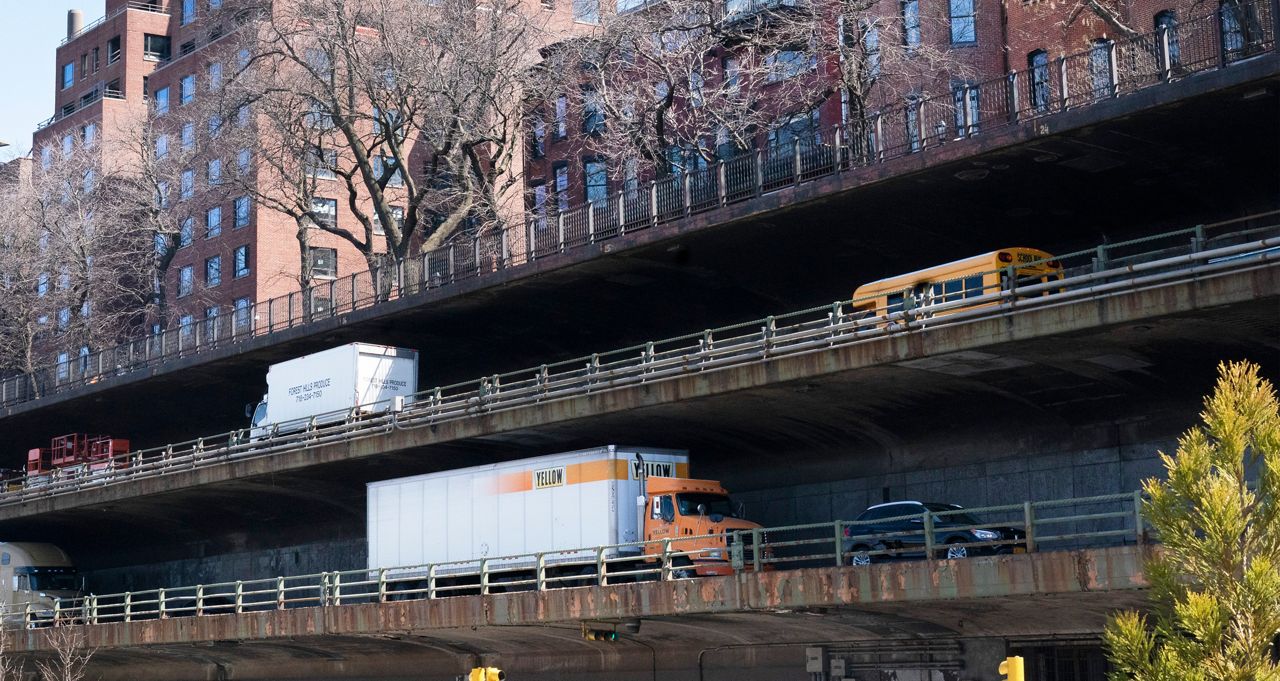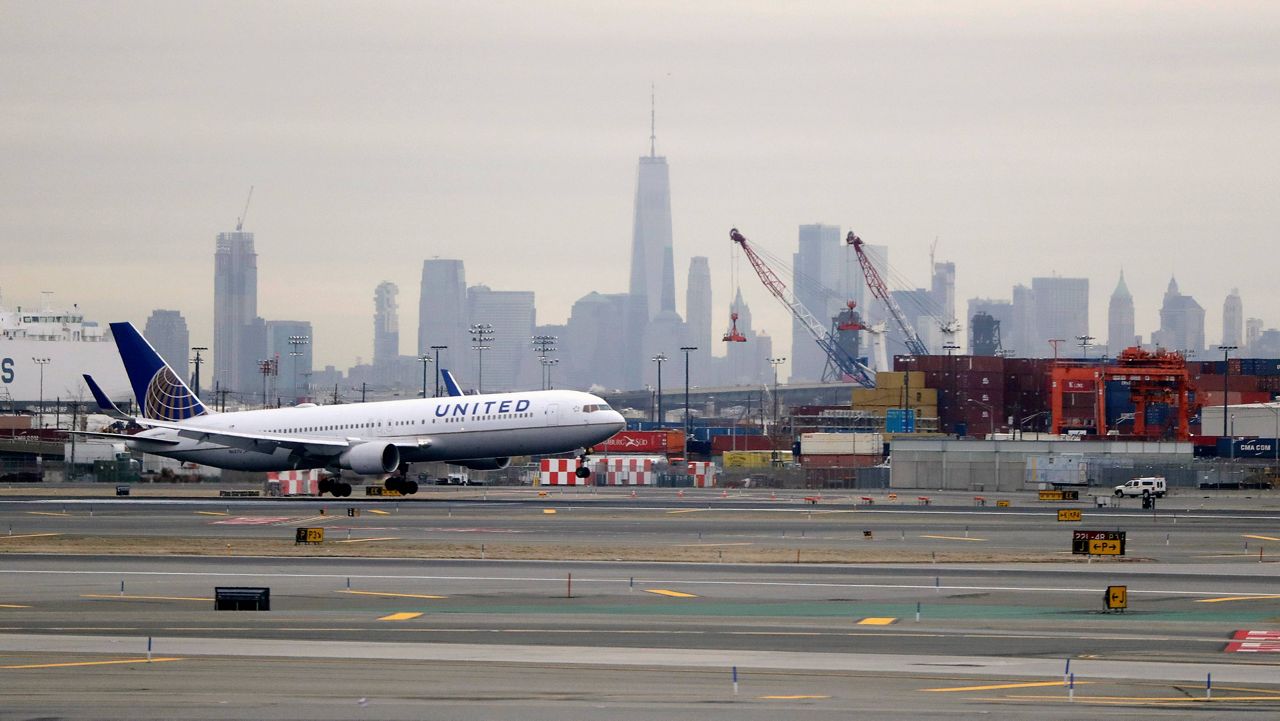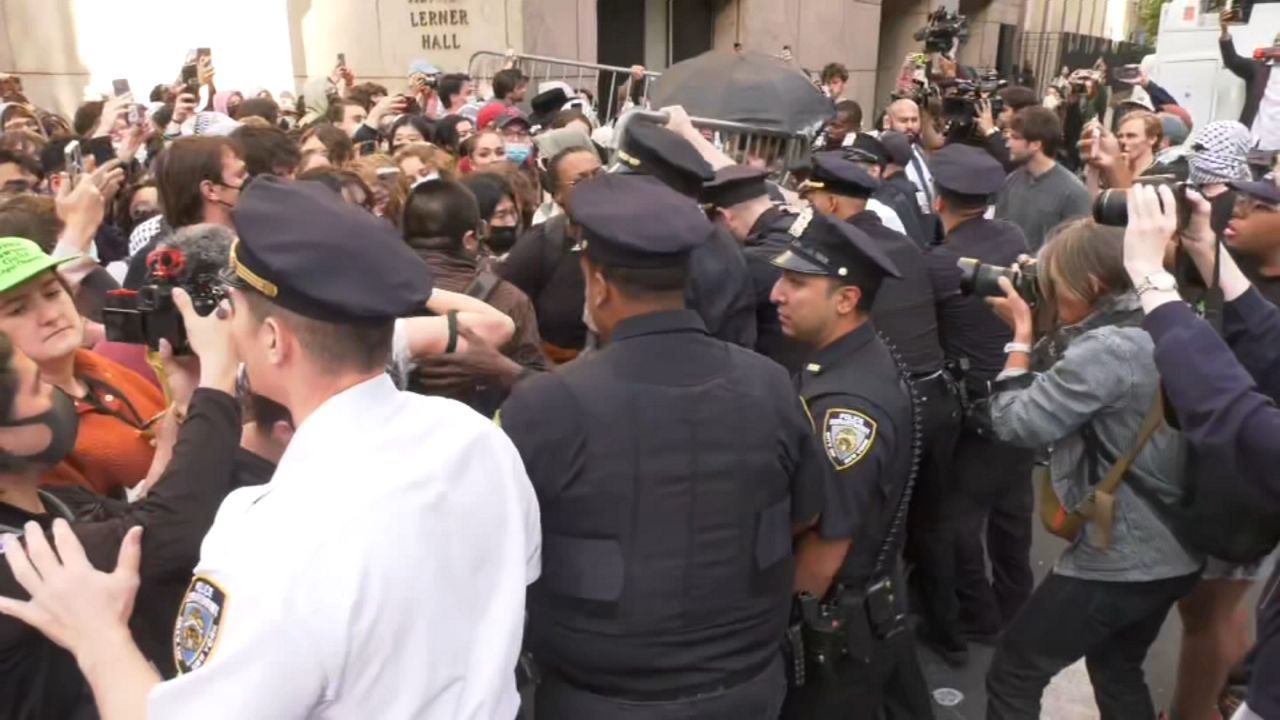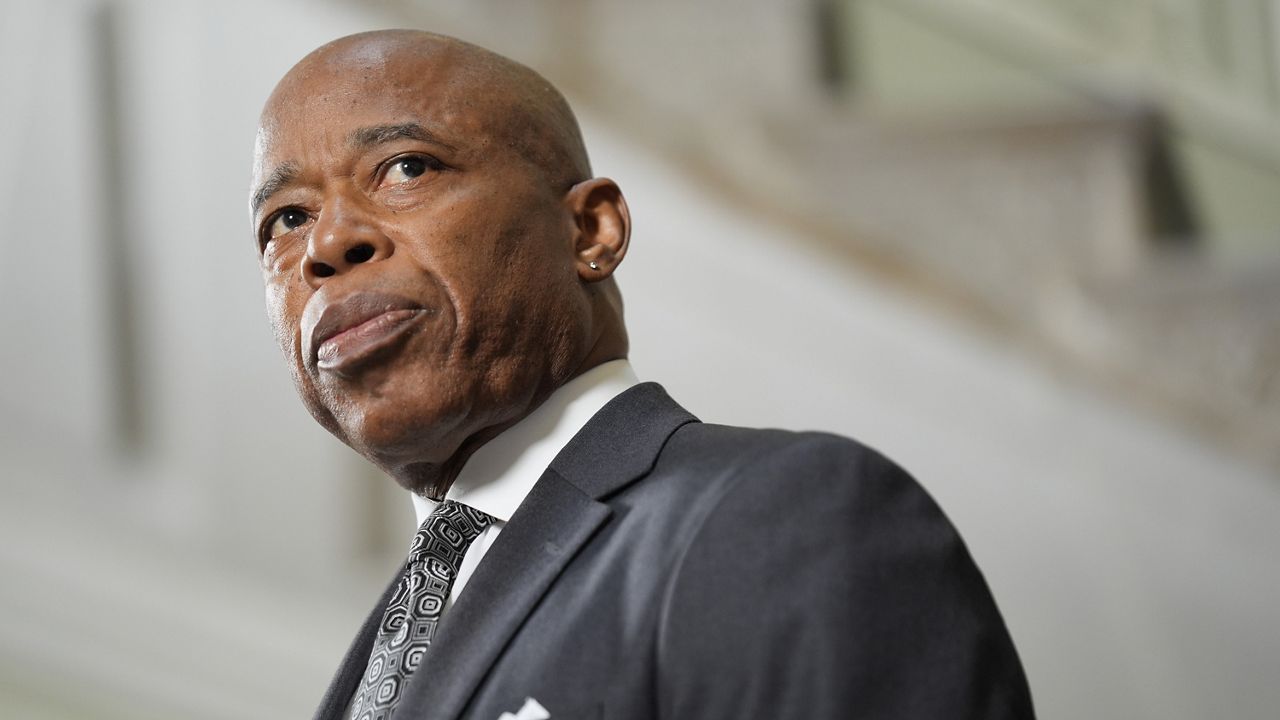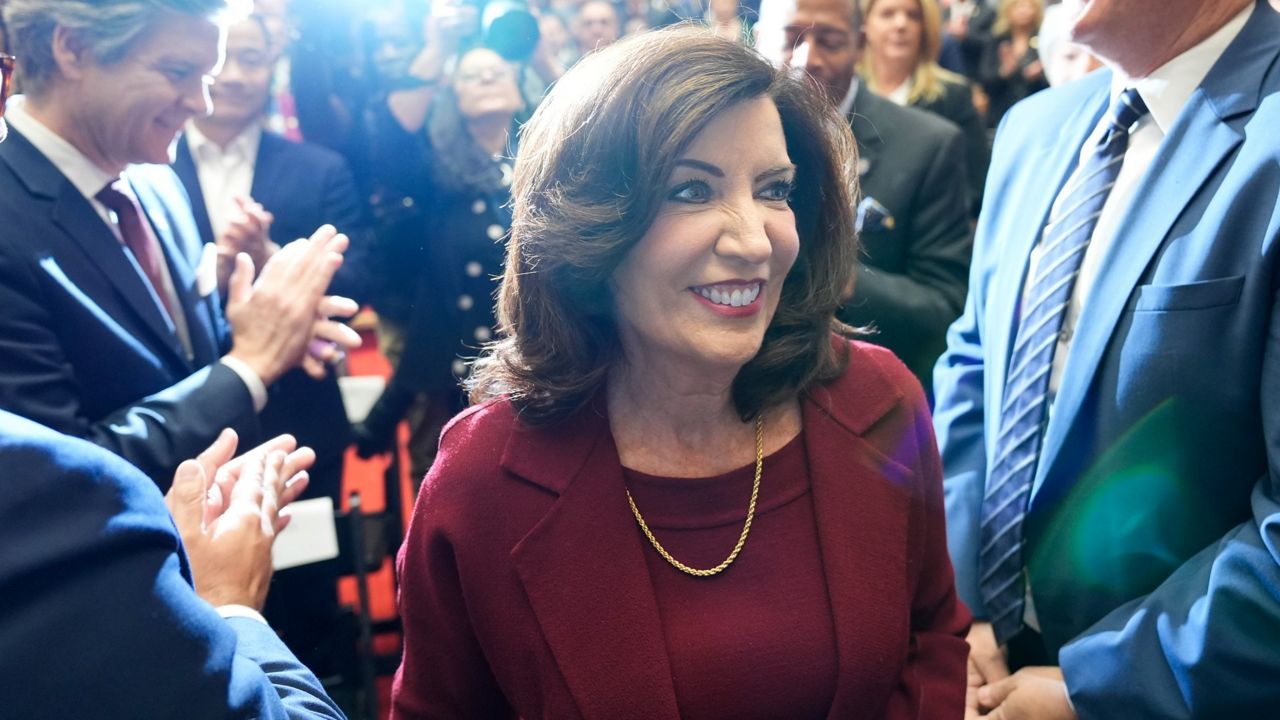Mayor Bill de Blasio announced Wednesday a plan to extend the life of the crumbling Brooklyn-Queens Expressway in order to buy time for the city and local community groups to come up with a vision of how to rebuild the crucial city artery.
A mix of repairs and changes to the flow of traffic — waterproofing key joints and reducing lanes — will be able to extend the life of the 70-year-old BQE another 20 years, de Blasio said, including the famed triple-cantilever section of the roadway.
The announcement comes after years of proposals, panels and rejected plans — the latest chapter in decades of discussions on how to fix one of the country’s most unique and rundown highways. De Blasio framed it as a step toward reimagining traffic in an increasingly congested metropolis.
The new plan comes months before de Blasio leaves office and after the city’s transportation department put forth two ultimately rejected visions for the highway.
“People can say, ‘kicking the can down the road.’ I just disagree,” he said at a Wednesday news conference. “We have a structure. We thought it was in danger of literally imminent collapse. It turns out there's a way to preserve it.”
The BQE was a product of mid-century highway expansion and of master builder Robert Moses’ attempts to create dozens of miles of interstates through New York City at the expense of entire neighborhoods that were torn down to make room for them. Local opposition in Brooklyn Heights to Moses’ original vision resulted in compromise that took the form of the triple-cantilever, which has a promenade on its upper deck.
Before the pandemic, the BQE was the city’s No. 1 infrastructure priority. The highway was built to handle about a third of the 153,000 cars it gets daily and illegally overweight trucks are speeding up its demise.
DOT safety inspections have found that some stretches of the highway were at risk of collapse without repairs. An expert panel convened by the mayor released a report in January 2020 saying that “significant repairs and replacements” would be necessary by 2026 to avoid completely eliminating truck traffic and enforcing weight limits on vehicles.
Now, the city’s transportation department has proposed a four-part plan: perform necessary maintenance, including repairs that are already underway and others that will start by early next year; preserve the infrastructure by reducing the number of lanes, eliminating salting of the roads and waterproofing metal joints; enforce truck weight limits; and start the community planning process.
City officials did not detail how they would enforce truck weight limits. Gov. Andrew Cuomo has yet to sign a bill passed by the state Legislature that would automatically fine overweight trucks.
“All of this, we’re told by the experts, will give us another 20 years,” said Hank Gutman, the city’s transportation commissioner.
Elected officials who joined the news conference said that the extra time was necessary to create a plan endorsed by as many community groups as possible. In 2019, a DOT proposal that included tearing down - and eventually rebuilding - the Brooklyn Heights promenade, received significant community pushback.
“The time that this new course will afford the community to really look through how to address the entire corridor of the BQE from Bay Ridge to Astoria is going to be essential,” said Stephen Levin, a City Council member whose district covers the cantilever section.
Community groups saw the announcement as a step in the right direction, allowing them time to create a strong network of residents to help develop a permanent solution for the highway.
“It’s better than nothing,” said Sidney Meyer, the chair of the transportation and public safety committee for Community Board 2. “It's a good first shot. It has to be followed up by other things that will fix the road.”
With de Blasio on his way out, it was not the right time for a full rebuilding proposal, said Laura Birnback, the executive director of the Brooklyn Heights Association.
“While everybody is looking forward to the day when we do have a transformative vision for the BQE in place, I don't think that the community engagement and involvement process is far enough along for that kind of grand vision to be unveiled,” she said.
Birnback said she was disappointed de Blasio had not immediately implemented some of the changes proposed in the January 2020 expert panel report, which included lane reductions and strict truck enforcement.
“I wish that we were further along than we are today,” she said. “But I’m trying to be forward looking about it, and say, ‘We're here now, let’s pick up this momentum again.’ ”
Rachel Weinberger, a senior fellow for transportation at the Regional Plan Association, said that thoroughly policing trucks’ weights on the highway will have an enormous impact on its longevity.
“It seems right, it feels right, and the intermediate solution is a radical departure from business as usual,” she said. “DOT could have come up with a plan, but it would have been pushed back against as vociferously as it was in 2019.”
The new plan, Weinberger added, will work best as part of a broader package of changes to traffic in New York City, such as with congestion pricing in Manhattan. She hopes that the lane reduction effort will be as successful as the 14th Street busway, a major road use change that has not had a major impact on traffic.
“What we’re gonna see here is that this is a good operational plan, and it doesn't cause a traffic jam all the way back to the Verrazzano Bridge,” she said.




